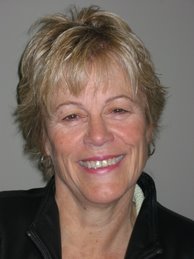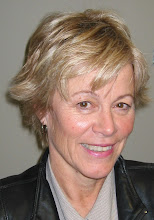Can Bank of America's new loan product revolutionize lending?
Tuesday, May 22, 2007By Ilyce R. GlinkInman News
If you ask home buyers what they hate about the process of buying a home, closing costs are likely to land near the top of the list.
Are you surprised? Mortgage companies have made it difficult, if not impossible, to tell what's a true cost and what's a junk fee. Home buyers are being charged for things that should be included in the profit the lender is making.
Why, for example, is there an "underwriting fee"? The process of underwriting a loan can take minutes, as many lenders have streamlined the process and use technology that nearly instantaneously spits out whether someone is qualified.
Is this $250-to-$500 fee the cost of someone's time to enter in the information into the computer program? And if that's what you're paying for with that line item on the HUD-1, what's the $200 document preparation fee for? Is this a prime example of a lender double-dipping or just another revenue source? Does it really cost the lender $200 to prepare the closing documents on top of what you're paying for the underwriting fee, application fee and other fees?
If all of these fees weren't bad enough, the true costs of these items are often marked up to pad the lender's profit. A prime example? It might cost the lender a couple of bucks for your credit history and credit score, but some have charged $75 to $150.
And what about title charges? In some states, title costs are mandated by the state law. Why? I don't know for sure, but I'll hazard a guess that it has to do with the way title companies lobby state legislatures.
Even in states where title costs aren't mandated by state law, true competition remains elusive, as attorneys are paid many hundreds of dollars for essentially doing very little or no "title" work. (This practice is under investigation as a possible violation of RESPA by the Justice Department.) Home buyers and sellers foot the bill for these services, and as a result, pay title and escrow charges that easily run several thousand dollars for each closing.
Lenders have tried to counter the closing cost discussion by introducing mortgages that are "zero-closing-cost." The problem is, they either made up the loss of the closing costs and fees by raising the interest rate on the loan or they simply tacked on an extra 3 percent of your loan amount to cover the missing costs.
So, if you didn't have enough cash on hand for your closing costs, you'd have to live with a slightly higher interest rate (not too tough when interest rates were at 5 percent for a 30-year fixed-rate loan) or your $200,000 mortgage would turn into a $206,000 loan.
All of this, plus lenders' penchant for calling junk fees by different names, has made it difficult for home buyers to really understand what they're paying for, and to properly compare loan programs from different lenders on an apples-to-apples basis -- even if you did get a proper good faith estimate, as required by federal law.
How do you fix the problem? Recently, Bank of America decided to do away with certain closing costs altogether. According to Floyd Robinson, president of the consumer real estate division of the bank, BofA has decided to pick up these costs without raising the interest rate on the loan.
"Our new No Mortgage Fee Plus program will cost the bank approximately $3,000 for every $200,000 loan," Robinson explained. "We're eliminating the mortgage application fee, all closing fees, and all lender charges and third-party fees. In addition, the program is available to up 95 percent of the sales price and we will not be charging anyone private mortgage insurance (PMI)."
Robinson said borrowers would not pay any lender closing fees, flood determination fees, title exam fees, courier fees, tax service fees, settlement closing fees, or tax escrow or impound fees. Robinson also said that borrowers would not have any prepayment penalties on their new loans.
Robinson points out that Bank of America plans to hold these home loans in their own portfolio, instead of reselling them on the secondary loan market. At the moment, the loans are available only to those actually buying a house instead of refinancing an existing mortgage, although he suggested that the bank is working on a true no-cost refinance product that it hopes to introduce later this year.
"We are really focused on putting the right home buyer into the right loan, and keeping these loans on the bank's balance sheet is our way of showing how serious we are about that," Robinson said.
The Bank of America No Mortgage Fee Plus program will be available to any home buyer who has at least a 620 credit score, he said, adding, "We have the lowest default and foreclosure rate in the industry."
Robinson said that while the bank wouldn't collect the $3,000 in fees on each $200,000 mortgage, executives were confident that the new program would dramatically increase the bank's share of the residential loan market, and that would give them new opportunities to cross-sell other products.
"Most Bank of America customers have several different accounts at the bank. They might have a home loan, credit card, checking account, savings account, or even an auto loan with us. This is one more opportunity to provide a service to new and existing customers."
Dick Lepre, a senior loan officer with Residential Pacific Mortgage, based in San Francisco, who has several accounts with Bank of America, says he believes the new loan program is probably a very good one and that the bank is willing to spend what it takes to get a bigger share of the business.
"Nobody likes closing costs. While the bank can't change the economics of the mortgage business, it can absorb these costs as a marketing expense. It's the cost of establishing in people's minds that these loans are out there," Lepre said.
But Lepre wonders how long the bank intends to offer these closing-cost-free loans.
"When E-Loan started, it closed mortgage loans at the wholesale price in order to establish themselves as a place to go. Now, their prices have gone up. We'll have to see what happens with the Bank of America program," he added.To get even more valuable advice from Ilyce, visit her Personal Finance and Real Estate Center.
Thursday, May 24, 2007
Subscribe to:
Post Comments (Atom)


1 comment:
Nice post. thanks for sharing.
Post a Comment